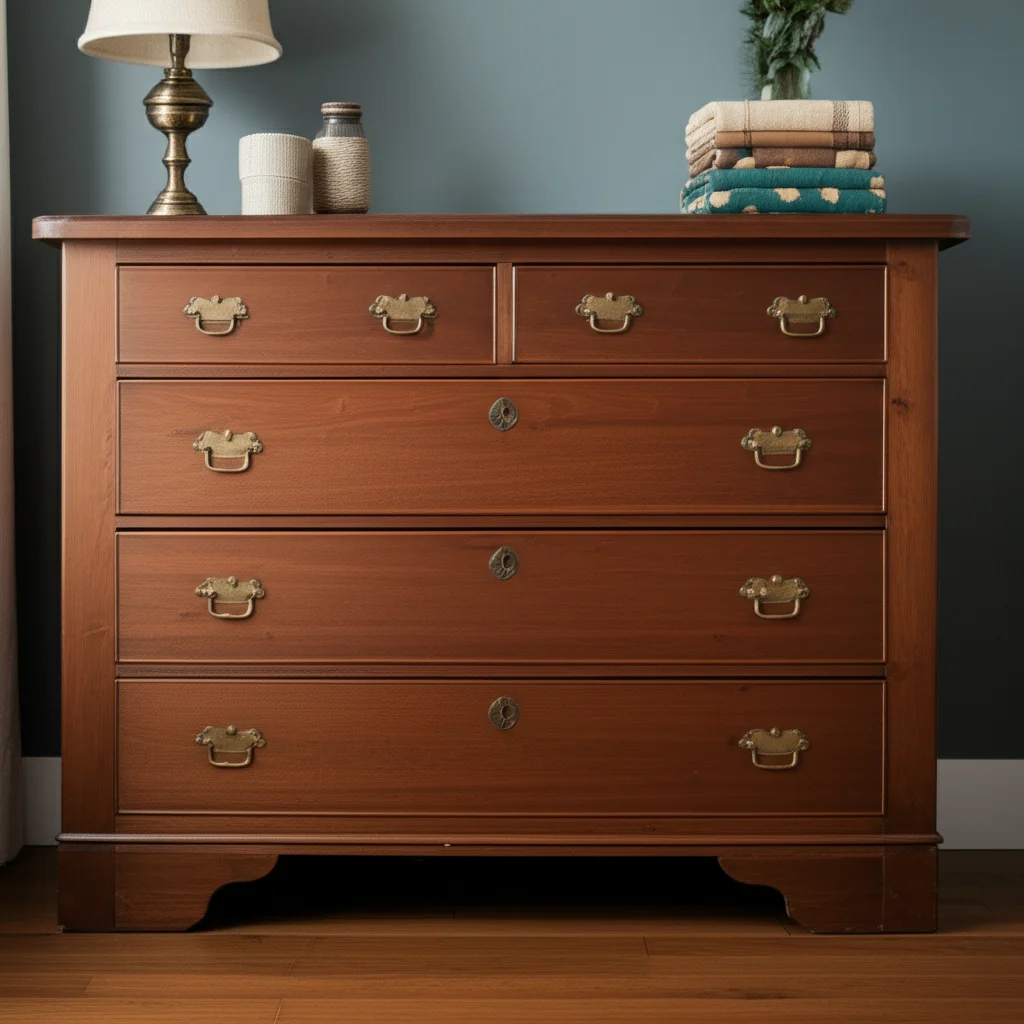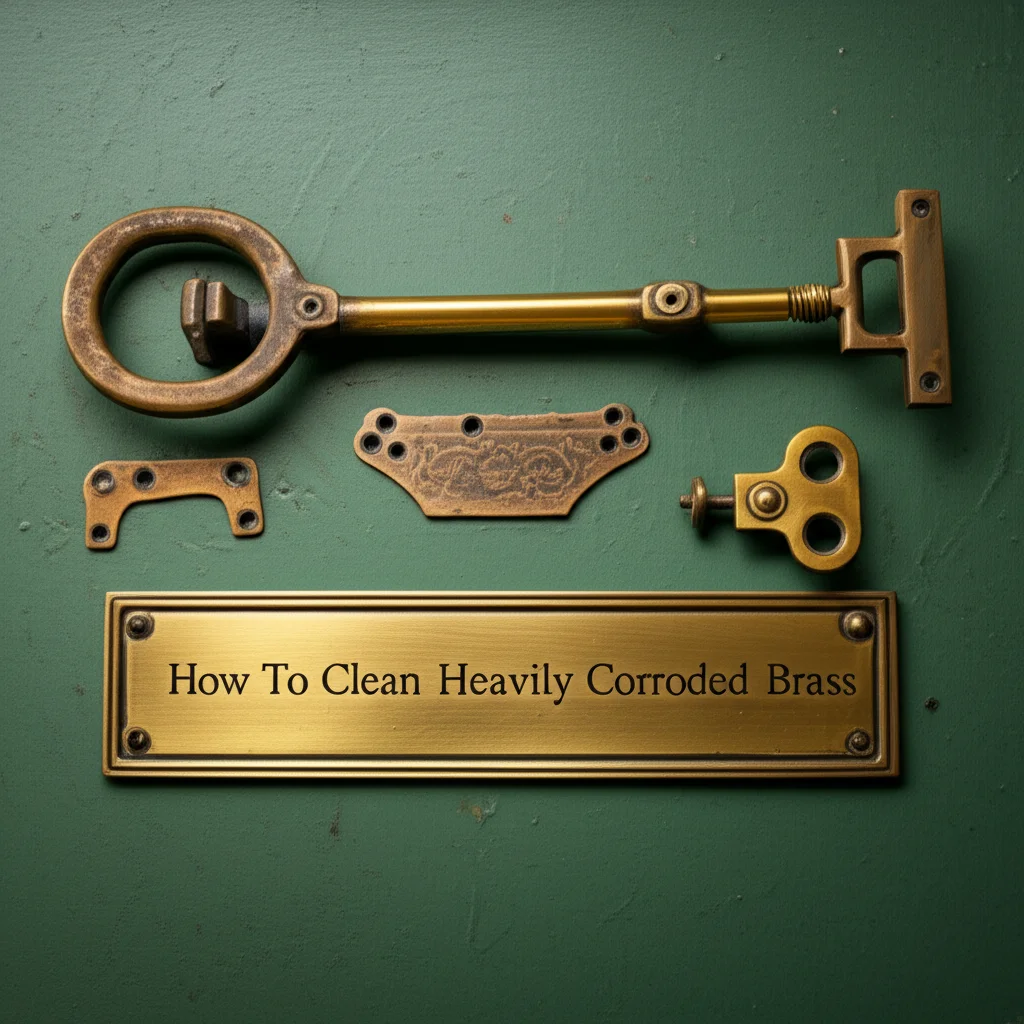· Todd Martin · Home Care · 13 min read
How To Clean Cedar Chest

Restore Your Cedar Chest: A Gentle Cleaning Guide
A cedar chest is a cherished piece. It holds memories and protects precious items. Over time, dust, dirt, and even odors can build up. Knowing how to clean a cedar chest properly keeps it looking its best. This guide provides simple steps to restore your chest’s beauty and its signature fresh scent. We will cover exterior and interior cleaning, tackle common issues, and discuss long-term care.
Takeaway
- Exterior Cleaning: Dust first, then wipe with a damp cloth and mild soap. Use specialized wood cleaners for tough spots.
- Interior Aromatic Restoration: Lightly sand the inside or simply air it out to refresh the cedar smell.
- Problem Solving: Address mildew, stains, and odors with specific, gentle methods.
- Preventative Care: Maintain your cedar chest by controlling humidity and cleaning regularly.
To clean a cedar chest, begin by vacuuming dust from inside and out. Use a soft cloth with a mild wood cleaner on the exterior. For the interior, a light sanding with fine-grit sandpaper helps restore the cedar’s natural aroma. Avoid harsh chemicals that can damage the wood or its unique properties.
Understanding Your Cedar Chest’s Unique Needs
Cedar chests are special pieces of furniture. They are often made from aromatic red cedar. This wood naturally repels moths and other pests. This makes them perfect for storing blankets, clothing, and linens. However, cedar wood needs specific care. Standard cleaning methods can harm its natural properties.
The distinct aroma comes from oils within the wood. This scent can fade over time. Dust and dirt can also dull the wood’s appearance. You might find your cedar chest accumulating grime on its outside. The inside might lose its protective smell. It is important to clean both parts correctly. We need to preserve the wood and its aroma.
Many cedar chests are old. They may have different finishes on the outside. Some are varnished or painted. Others have an oil finish or no finish at all. The interior is almost always unfinished. This allows the cedar scent to release. Knowing your chest’s construction helps you choose the right cleaning approach.
Taking the right steps ensures your cedar chest remains a treasure. It will continue to protect your belongings. Its beautiful wood will last for generations. Gentle care is always the best way to clean a cedar chest.
Gathering Your Essential Cleaning Supplies
Before you start to clean a cedar chest, gather all your tools. Having everything ready makes the process smoother. You want to use gentle materials. Harsh chemicals or abrasive tools can damage the wood. Protect your chest from scratches and discoloration.
Here is a list of what you will need:
- Soft cloths: Microfiber cloths work well. They do not scratch surfaces. Use several for different steps.
- Vacuum cleaner with brush attachment: This helps remove loose dust. It gets into corners and crevices.
- Mild dish soap or wood cleaner: Choose a pH-neutral product. Avoid cleaners with harsh detergents.
- Warm water: Use a small bucket or spray bottle.
- Fine-grit sandpaper (220-grit or higher): This is for refreshing the interior. It helps release the cedar aroma.
- Mineral spirits (optional): Good for stubborn grime on the exterior. Always test it in a hidden spot first.
- Lemon oil or furniture polish (optional): Use for finished exteriors. This adds shine and protection.
- Small scrub brush or toothbrush: Useful for detailed areas and hardware.
- Protective gloves: Protect your hands from cleaning solutions.
Make sure your cloths are clean. Dirt on a cloth can scratch the wood. Prepare your workspace. Lay down a drop cloth if you are working indoors. This protects your floors. Having the right supplies ensures a safe and effective cleaning.
Step-by-Step Exterior Cleaning of Your Cedar Chest
Cleaning the outside of your cedar chest brings back its shine. The exterior is exposed to dust and spills. This part might have a finish. You need to be gentle. A simple cleaning routine works wonders.
First, remove all items from the top of the chest. Use your vacuum cleaner with a soft brush attachment. Gently vacuum the entire exterior surface. Pay attention to carved details and corners. This removes loose dust and debris. Do this before applying any liquids.
Next, prepare a gentle cleaning solution. Mix a few drops of mild dish soap with warm water. Dampen a soft cloth with this solution. Wring out the cloth very well. It should be damp, not wet. Excess water can damage wood. Wipe down the entire exterior surface. Clean in small sections. Rinse your cloth often.
For stubborn dirt or grime on finished surfaces, you can use mineral spirits. Apply a small amount to a clean, soft cloth. Test it on an inconspicuous area first. Gently rub the affected area. Follow up with a damp cloth to remove any residue. Mineral spirits help clean without leaving much moisture. You can find more tips for cleaning wood surfaces, similar to how to clean wood floors. Always work carefully to protect the finish.
After cleaning, use a dry, clean cloth to wipe the chest dry. Make sure no moisture remains on the surface. This prevents water spots and protects the wood. Your cedar chest exterior will look much cleaner. This prepares it for any polishing steps.
Revitalizing the Aromatic Interior of Your Cedar Chest
The inside of your cedar chest is unique. It is usually unfinished cedar wood. This allows the wood to release its natural oils. These oils create the characteristic aroma. This aroma repels moths and other pests. Over time, the scent can fade. Dust and debris also collect inside.
Start by completely emptying the chest. Remove all contents. Use your vacuum cleaner with a soft brush attachment. Vacuum the entire interior, including corners and crevices. This removes lint, dust, and any small debris. Make sure the inside is completely free of loose particles.
To refresh the cedar aroma, you have two main options. The simplest method is to air it out. Open the chest lid completely. Let it sit in a well-ventilated area for several hours. This often helps dissipate any stale odors. Fresh air helps reactivate the cedar oils. This can be enough for a light refresh.
For a stronger scent restoration, gently sand the interior. Use very fine-grit sandpaper, such as 220-grit or higher. Lightly sand the inside surfaces. Work with the wood grain. Do not press hard. You are only aiming to expose a fresh layer of cedar. This process releases new aromatic oils. It is similar to how you might refresh the scent of a cedar fence. After sanding, wipe the inside with a dry, soft cloth. This removes all sawdust.
Never use water, soap, or chemical cleaners on the interior. These can clog the wood pores. They prevent the cedar oils from releasing. This also stops the moth-repelling effect. Keep the interior dry and natural. Your efforts will bring back that wonderful cedar smell.
Tackling Common Cedar Chest Problems: Stains, Mildew, and Odors
Cedar chests can face specific problems. Stains, mildew, and strong odors are common issues. Each problem requires a different, careful approach. Do not use harsh solutions. These can cause further damage to the wood.
For mildew or mold, quick action is important. Mildew grows in damp, dark conditions. First, move the chest to a well-ventilated area. Open the lid to allow air circulation. Mix equal parts white vinegar and water. Dampen a cloth with this solution. Gently wipe down the affected areas. Vinegar is effective against mold and safe for wood. For persistent mold, especially on different surfaces, you might find tips on how to clean mold with vinegar. After cleaning, wipe with a clean, damp cloth. Then, dry the area thoroughly. Let the chest air out completely before closing it.
Water rings or light stains on the exterior can often be removed. For fresh water rings, a non-gel toothpaste dabbed on with a soft cloth can work. Rub gently with the wood grain. Wipe off immediately. For other stains, similar to how to clean stains on wood, try a gentle wood cleaner. You can also make a paste of baking soda and a little water. Apply it to the stain. Let it sit for a few minutes. Gently wipe it away. Always test any solution in an inconspicuous area first.
Persistent odors inside the chest are also common. Sometimes, old clothes leave a stale smell. After vacuuming and airing out, if the odor remains, try charcoal. Place a bowl of activated charcoal inside the chest. Close the lid. Let it sit for a few days. The charcoal absorbs odors. Baking soda in an open container also works similarly. Change the charcoal or baking soda if the odor persists. These natural methods avoid introducing new smells. They help keep your cedar chest fresh.
Restoring the Luster and Scent of Your Cedar Chest
After cleaning, you can enhance your cedar chest’s appearance and aroma. This final step adds protection and beauty. It ensures your chest looks its best. You want to maintain the wood’s natural glow.
For the finished exterior, consider polishing it. If your chest has a varnish or lacquered finish, a good quality furniture polish works well. Apply a small amount to a clean, soft cloth. Rub it into the wood in the direction of the grain. Buff gently with another clean, dry cloth. This restores the shine. If your chest has an oil finish, like Danish oil or tung oil, reapply a thin coat of the appropriate oil. Follow the product instructions. This nourishes the wood and protects it. Always choose products designed for wood furniture.
For the aromatic interior, maintaining the scent is simple. After you clean a cedar chest, it should smell fresh. If the scent fades again over time, re-sanding is an option. However, avoid sanding too often. This removes wood layers unnecessarily. A light pass with fine-grit sandpaper once every few years is usually sufficient. You can also use cedar blocks or cedar oil. Place a few cedar blocks inside the chest. The blocks enhance the natural cedar aroma. For cedar oil, put a few drops on a cloth and wipe it inside. Do not apply directly to the wood. This method provides a boost without sanding.
Remember, the goal is to enhance, not saturate. Your cedar chest will now look clean and smell fresh. It is ready to store your precious items safely. Regular maintenance keeps it in prime condition. This careful restoration process makes a big difference.
Preventative Care for Your Cedar Chest
Maintaining your cedar chest after cleaning is crucial. Preventative care saves you effort in the long run. It also protects the wood and its valuable properties. A few simple habits keep your chest in excellent condition.
Regular Dusting: Dust settles everywhere. Lightly dust the exterior of your cedar chest weekly. Use a soft, dry microfiber cloth. This prevents dust buildup and surface grime. Frequent dusting makes deep cleaning less necessary. It also keeps your chest looking tidy.
Proper Placement: Where you place your cedar chest matters. Keep it away from direct sunlight. Sunlight can fade the wood and dry it out. Avoid placing it near heat sources like radiators or vents. Extreme temperature changes can cause wood to crack. Maintain consistent room temperature and humidity levels. High humidity can cause swelling or mildew. Low humidity can lead to cracking.
Humidity Control: Cedar wood reacts to moisture. In very humid environments, use a dehumidifier. In dry climates, a humidifier helps. A humidity level between 40-50% is ideal for most wood furniture. This helps prevent damage and preserves the wood’s integrity. It ensures the wood remains stable.
Air Circulation: Periodically open the chest lid for a short time. This allows air to circulate inside. It helps refresh the scent naturally. It also prevents stale odors from developing. Do this once a month or every few months. This simple act keeps the interior fresh.
Avoid Overfilling: Do not pack your cedar chest too tightly. Overfilling can put stress on the joints. It also reduces air circulation around stored items. Give items some space. This prevents wrinkles and allows the cedar aroma to reach everything. By following these simple preventative steps, your cedar chest will stay beautiful. It will continue to protect your belongings for many years.
Frequently Asked Questions About Cleaning Cedar Chests
Can I use furniture polish on the inside of my cedar chest?
No, you should not use furniture polish on the inside of a cedar chest. The interior is typically unfinished cedar. Polish contains waxes or oils that can clog the wood’s pores. This prevents the natural cedar oils from releasing. The chest would lose its aromatic, moth-repelling properties. Keep the interior natural and unfinished.
How often should I clean my cedar chest?
Clean the exterior of your cedar chest as needed, typically every few months for light dusting and a more thorough cleaning once or twice a year. The interior only needs attention when the aroma fades. This might be once every few years. Avoid over-cleaning, especially the interior, to preserve the wood.
What causes the cedar smell to fade?
The cedar smell fades as the volatile oils within the wood evaporate over time. Dust buildup can also cover the wood pores, trapping the scent. Frequent exposure to air can also cause evaporation. Gentle sanding helps expose fresh wood layers, releasing new aromatic oils.
Can I use essential oils to restore the cedar scent?
You can use cedar essential oil to enhance the scent. Put a few drops of pure cedar essential oil on a clean cloth. Wipe this cloth inside the chest. Do not apply the oil directly to the wood. This method boosts the aroma without harming the wood’s natural properties.
Is it safe to store delicate fabrics in a cedar chest?
Yes, cedar chests are safe for storing delicate fabrics. The natural oils in cedar repel moths and other insects. This makes them ideal for wool, silk, and other natural fibers. Ensure fabrics are clean and dry before storage. This prevents mildew and odors from forming inside the chest.
My cedar chest has a musty smell. How do I remove it?
First, empty and vacuum the chest. Then, air it out in a well-ventilated area for a day or two. If the musty smell persists, place an open container of activated charcoal or baking soda inside. Close the lid and let it sit for several days. These absorb odors effectively.
Conclusion
Cleaning your cedar chest ensures its longevity and effectiveness. We have covered gentle methods for both the exterior and the unique interior. You learned how to clean a cedar chest by tackling dust, refreshing the aroma, and solving common problems like mildew or stains. Remember to use mild solutions and avoid harsh chemicals. This preserves the natural beauty and pest-repelling power of the cedar wood.
Regular dusting and proper placement prevent damage. Occasional re-sanding or airing out keeps the cedar scent strong. Your cedar chest is a timeless piece. With these simple care steps, it will continue to protect your cherished belongings for many years to come. Take pride in maintaining this beautiful and functional heirloom. Your efforts will keep it a valuable part of your home.





